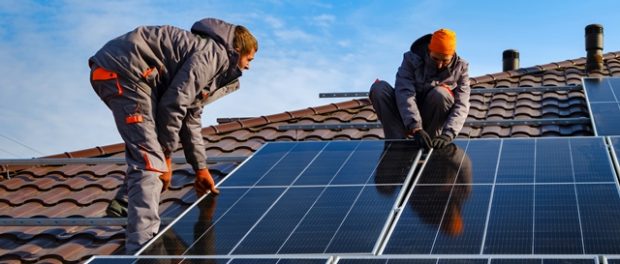
Preparing for the skills of tomorrow
There must have been a time in the 1920s some 20 years after the introduction of the Model T Ford in the United States, and with millions of them on the road, when someone referring to motor cars as “iron horses” may have been taken quietly aside and told: “Really? Time to move on”.
Perhaps, 100 years on, we are at that moment now with the “green energy” transition.
Twenty years after the emergence of major green energy technologies – wind, solar, electric vehicles, batteries and ancillary technologies — they have become the new energy system. Green has far less to do with it – they are just better. Each of these technologies have grown well over 10 times since 2000, and continue to grow at rates of 15-20% per year – meaning they could be up to three to four times bigger again by 2030: wind and solar already are 12% of the global power industry, EVs are already at 15% of global new car sales.
Play with energy scenarios galore – but the math’s takes you to some unambiguous conclusions. Green energy technology is the new energy system. Perhaps time to retire the colourful adjectives: green energy is energy.
The new energy annual deployment numbers of erstwhile “green technology” are now in the trillions, as modern large-scale energy production continues its rapid move from extraction to manufacturing. Bloomberg New Energy Finance (BNEF) noted this month that investment in new energy technology – mostly wind, solar, EVs, batteries — reached over a trillion dollars in a single year for the first time.
Re-Skill your team for the future – Activate a Solar PV course today
Although investment in electric vehicles (EVs) is 50% of the growth, and contrarians will argue what about the continued investment in conventional cars, the surge in wind and solar technology alone is already outpacing global capital expenditure in oil and gas for the first time ever and at what blistering pace.
And in the case of wind and solar power (20% pa growth) and EVs (50% pa growth) the surge in new energy development at this scale pushes it to the centre of global industrial strategy.
It will not be too long before building a new home without solar will be seen to be as quaint and old-fashioned as putting a house on the market with an outside toilet, but in the meantime this ‘market failure’ to deliver low energy buildings for customers has created the need for regulation. Building Regulations are intended to do just this job – enforcing a minimum level of energy efficiency on new homes.
Step forward the government’s “Future Homes Standard”, proposing a road map for building regulations that will result in homes in England being built to, yep, you guessed it, “World Leading” standards of energy efficiency.
The changes will be made in two steps. New 2021 Building Regulations Part L will be written into law in the Autumn and will come into force from June 2022, followed by a second update to Part L to deliver the Future Homes standard with a target that this is in force by 2025. This may be coupled to separate legislation that prevents the connection of new developments to the gas network, which the Energy White Paper published in December proposed.
No longer at the fringes as a “green alternative”, the new technologies are at the forefront of the UK’s and the rest of the world’s major economic powers.
Those major economic powers are thus reacting to this reality. So, If someone mentions to you this year that wind, solar, EVs and batteries are just fringe green technologies you might want to take them aside and say: “Really? It’s time to move on.”
So, get your team equipped for the skills of tomorrow, today.
View all our courses here.
Activate Trade Training are electrical training and assessment specialists, they deliver and assess a full range of electrical, gas, plumbing and health & safety courses throughout the UK. From further education colleges to private training providers or to your workplace.




